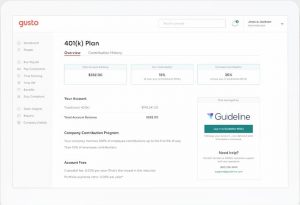A compelling, meaningful and relevant value proposition enables you to increase the quantity and quality of prospective opportunities, gain market share in your targeted segments, and charge a premium price. Conversely, poor positioning contributes to long sales cycles, low close rates, customer confusion, channel indifference, and sales organization discord. It’s nearly impossible to survive or thrive without a unique, pertinent value proposition. So, no wonder over 80% of the companies who participated in a recent survey said that their teams needed to adjust or re-think their company’s positioning strategy.
But most marketers are challenged to get it right. In his book entitled “On Competition” Michael Porter states that the three keys to strategic positioning include the creation of a unique value position, making trade-offs, which includes choosing what not to do (sometimes the hardest part), and creating fit among a company’s activities.
Your value proposition is the keystone to your strategy. Strategy decisions revolve around the needs of the customers, the business objectives of the organization, and the activities of your company. Only by understanding your market and customers and how your company fits in the competitive landscape can you formulate a value position that will enable your company to compete more successfully.

Components of a Compelling Value Proposition
Unique compelling value propositions are clear, concise and speak to:
- Your customers’ unmet needs/problems
- How your solution uniquely addresses those needs (solution value)
- How your solution is better than other options on the market (your competitive differentiation)
- Proof points for #2 and #3
Make Your Value Proposition Customer-Centric
The uniqueness of your value position depends on how much better you know and understand the needs of the markets you serve than your competitors. A customer-centric value proposition requires:
- Analysis and insights related to market requirements
- Your competitive differentiation
Connect Your Value Proposition With Your Customers
Developing a meaningful value proposition requires some good old fashioned research and thinking. To start developing your value proposition you’re going to need to conduct market research to understand market needs relative to what your business provides and what is important to them. Once you understand these two components, employ these 10 steps to a value proposition that connects to your customers’ needs:
- Research and document your customers’ business needs – financially, competitively, and operationally, their goals plus future sales, marketing, and product development (etc.) activities.
- Identify and record the issues and problems your customers are facing and will face in the future.
- Research customer expectations for solutions to the problems they are facing. What do they expect to happen when they implement a solution? What do they expect not to happen or to avoid?
- Assess and record industry trends, market trends, and your company’s capabilities.
- Identify any constraints facing the industry.
- Formulate how and to what extent your product/service and/or company addresses issues and needs in Steps 1-5.
- Develop a realistic group of potential experiences and results your customer can have as a result of applying each item you formulated in Step 6.
- Select and test the value that delivers the best experience and results.
- Develop a value proposition statement.
- Test the value proposition and collect data points on how well the real experience and results tracks to the claim of the value proposition. Modify as needed.
It’s Easy to Get Started and to Avoid the Common Pitfalls
While the task is challenging, because a unique and compelling value proposition increases the quantity and quality of your leads and pipeline, revenue, and market share, it is an imperative strategic initiative. Sometimes the best way to begin is with an internal dialogue. But trying to develop a strategic positioning platform and key messages internally without assistance from outside the organization often results in vague, inside-out, myopic, and ultimately unbelievable positioning. The reason for this failure is that office politics and deeply held biases heavily influence internal teams. To speed your initiative and avoid these potential pitfalls, check out our interactive, cost-effective positioning and messaging workshop.
Business & Finance Articles on Business 2 Community(136)
Report Post




